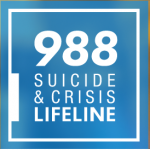The relationship between mental health and addiction has intrigued scientists and addiction specialists for centuries. But what is the connection exactly? Research gives mixed answers, but it is clear the two often appear together. The 2011 National Survey on Drug Use and Health: Mental Health Findings reports that a third of alcoholics and over half of drug users also have a mental illness, and one can often lead to the other.
For example, many people who suffer from chronic pain or emotional distress use some type of drug to relieve the symptoms. Those with adequate health insurance might take prescription medications under the guidance of a medical provider; those who cannot afford insurance often self-medicate through a variety of means, including street drugs and prescriptions sold on the black market. Over time, some people will develop a dependence on these drugs that can progress to addiction.
Conversely, some studies show a correlation between the use of certain drugs and the development or worsening of mental health symptoms. While even street drugs such as heroin are not generally associated with long-term mental health consequences, these drugs can be “cut” with poisonous substances that can negatively impact brain function. Additionally, the commencement of substance use in early years, such as among young teens, can interfere with brain development and lead to a mental health diagnosis.
Logan Graddy, MD, an addiction and forensic psychiatrist in North Carolina, works primarily with “dual diagnosis” patients, those who suffer from mental health and substance use issues. “In my experience, dual diagnosis is the rule not the exception,” he says. “At least 75 percent of my patients with substance dependence also suffer from another disorder such as PTSD, other anxiety disorders, depression, ADHD, bipolar disorder or schizophrenia.”
The strong relationship between mental health and substance use is of particular importance given the current drug overdose epidemic in the United States. Nationwide, drug overdose deaths have tripled over the past decade, now claiming more lives per year than car accidents. The majority of these deaths involve opiates, pain relievers such as OxyContin, Percocet and Vicodin, and many of the victims are people with mental health diagnoses who use opiates to self-medicate. A recent study reports that among young heroin users, overdose is strongly associated with a history of mental illness and access to prescription drugs.
“Opiates are very effective in the short term to treat physical pain and to help people cope with emotional pain,” explains Dr. Graddy. “The problem is that some people develop tolerance to these effects quickly and require higher and higher doses. It doesn’t take long to go from taking opiates to relieve pain to taking them so as not to feel physically sick from withdrawal. I see that happen every day.”
Other behaviors put people with mental health issues at risk for overdose, including mixing drugs. People who don’t have health insurance may not be able to afford continued access to prescription medications and often mix medications from different sources to meet their needs. Additionally, the high price of prescription painkillers drives some to seek cheaper sources of opiates, such as heroin. A felony conviction for possession of illegal substances can produce barriers to employment, education and other needs that harm a person’s mental well-being.
“With substance use we often see a phenomenon of downward drift,” says Dr. Graddy. “Once people become substance dependent, they will often experience legal and financial consequences that send them down the socioeconomic strata. This puts great stress on their mental health and increases the chances of morbidity and mortality due to substance abuse.”
To fight the drug overdose epidemic, Dr. Graddy recommends overdose education for citizens and prescribing physicians, greater access to affordable drug treatment, and increased availability of medications such as buprenorphine that help patients wean off opiate dependence. Additionally, communities nationwide have begun distributing naloxone, an antidote that reverses the effects of opiate overdose to restore normal breathing patterns. Across the country, 188 programs in 15 states, most run by small, community nonprofits, have distributed over 53,000 naloxone kits and report 10,000 overdose reversals. A 2013 study on the effectiveness of naloxone distribution programs in Massachusetts reported a 27-46 percent reduction in overdose rates in towns where a program was implemented, even when adjusting for other factors.
Dr. Graddy is the prescribing physician for his state’s only naloxone distribution program through the North Carolina Harm Reduction Coalition—a community-based nonprofit working to reduce the negative consequences of drug use in North Carolina. “Naloxone programs are an important part of a community response because putting these overdose kits into the hands of folks who are at high risk is going to save lives,” he says.
With drug overdose an increasing threat to our overstressed, pill-popping society, naloxone programs and other overdose prevention initiatives can give hope to the millions who depend on opiates for pain relief or emotional stability. And with mental health and drug treatment budgets being gutted and slashed across the nation, we could all use a little more hope.
Tessie Castillo is the communications and advocacy coordinator for the North Carolina Harm Reduction Coalition.







Comments
Comments